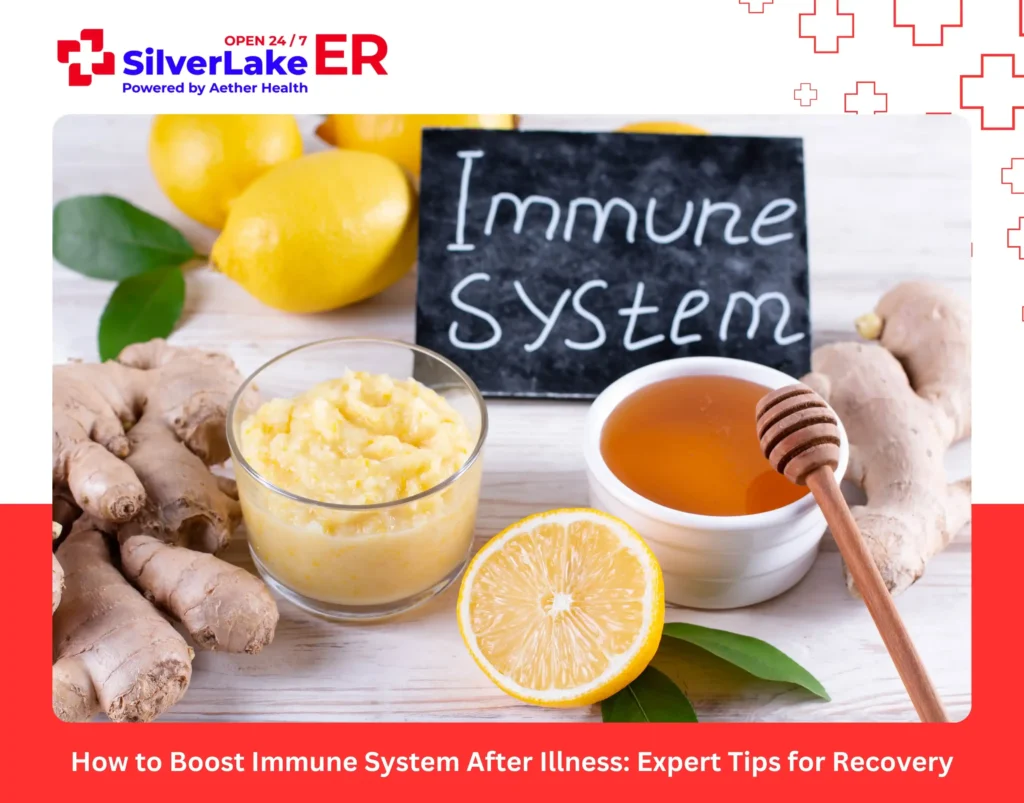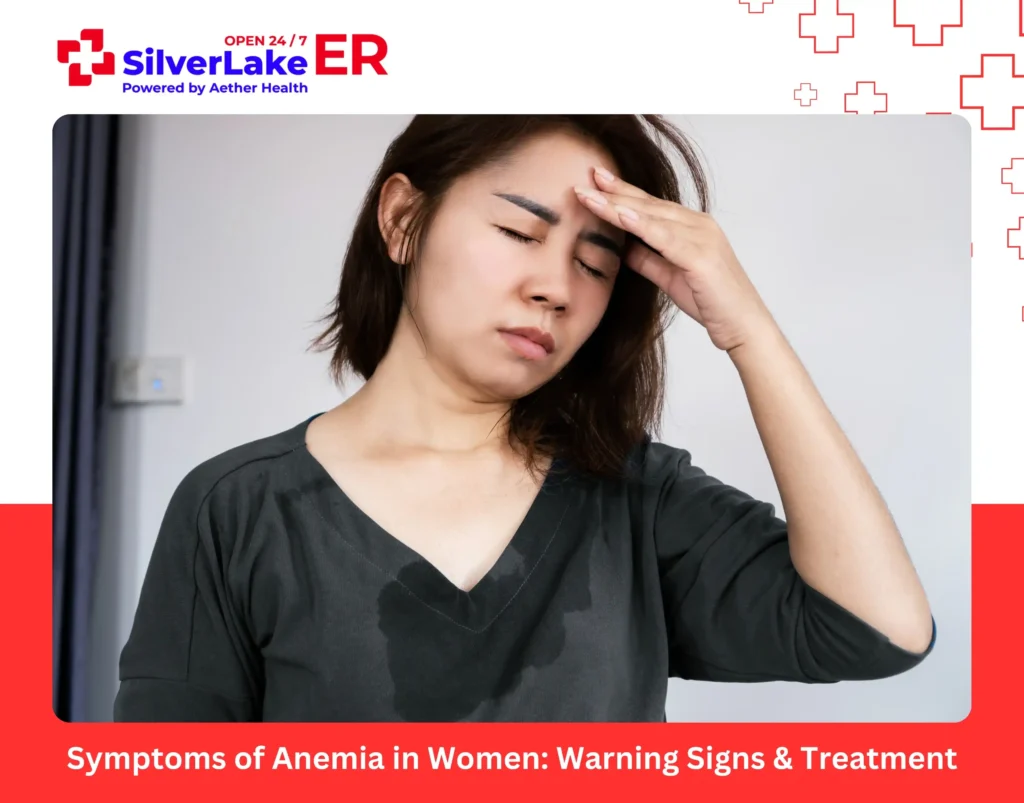Experiencing chest pain is unsettling. With every discomfort or twinge in the chest area, one can’t help but wonder, “Is this a cause for alarm?” Knowing when to go to ER for chest pain is vital. Being informed about the various nuances of chest pain, its potential causes, and knowing when to seek immediate medical attention is crucial.
Let’s explore more in this blog.
Possible Causes of Chest Pain
Chest pain, a symptom often imbued with anxiety, can stem from an array of conditions. Its origins range from benign, everyday issues to more severe, life-threatening problems. Here’s a more in-depth look into these causes, both cardiac and non-cardiac:
Heartburn or GERD
Acid reflux results when stomach acid makes its way back into the esophagus. This leads to a burning sensation in the chest, frequently mistaken for heart problems. Chronic acid reflux can lead to a condition known as GERD (Gastroesophageal Reflux Disease), which might cause more persistent discomfort.
Muscle Strain
Our chest is covered by muscles, which can get strained or injured. Activities like intense exercise, heavy lifting, or even sudden movements can lead to muscle strain, causing localized pain. This type of pain tends to be sharp and might increase with movement or deep breathing.
Panic Attacks
Stress and anxiety can manifest physically, sometimes producing symptoms that closely mimic those of a heart attack. During a panic attack, individuals might experience rapid heartbeat, chest pain, sweating, and a sensation of shortness of breath. While the pain is not stemming from a cardiac problem, it feels very real to the person experiencing it.
Lung Conditions
The lungs, positioned within the chest cavity, can be sources of chest pain when afflicted by certain conditions. Pneumonia, an infection of the lungs, can cause pain, especially when taking deep breaths. Pleurisy, inflammation of the lining of the lungs, is another potential cause, resulting in sharp chest pain that worsens during breathing. Pulmonary embolism, a more serious condition, involves a blood clot in the lungs, leading to sudden and intense chest pain coupled with breathing difficulties.
Heart Issues
Among the most concerning causes of chest pain are heart-related issues. This includes heart attacks, where blood flow to a part of the heart gets blocked, leading to chest pain and potentially damaging the heart muscle. Angina, caused by reduced blood flow to the heart muscle, can also lead to chest pain. It’s a symptom of coronary artery disease. Myocarditis, an inflammation of the heart muscle, is another potential cardiac cause.
How to Know When Chest Pain is Serious
What does serious chest pain feel like? Understanding what serious chest pain feels like is critical in making timely health decisions. This type of pain can manifest as intense pressure or a constricting sensation in the chest, almost as if a heavy object is pressing down on it.
Notably, there are times when the pain isn’t just confined to the chest area. For some, the pain can radiate, particularly with chest pain radiating to the back, neck, jaw, or even down the arms.
Symptoms of serious chest pain include:
- A pronounced feeling of pressure or constriction in the chest.
- Radiating pain, especially notable with chest pain radiating to the back, as well as towards the neck, jaw, or arms.
- Breathlessness accompanying the chest pain.
- Feelings of dizziness or light-headedness.
- Sudden cold sweats.
- Nausea or a sense of discomfort in the upper stomach region.
When to Go to ER for Chest Pain?
Your health and well-being should always be at the forefront of your decisions. Chest pain, especially when persistent or severe, should never be taken lightly. If you experience prolonged chest discomfort or if it’s accompanied by other alarming symptoms, it’s crucial to seek emergency care promptly.
The reason for this urgency is twofold:
Heart-Related Concerns
The heart is a vital organ, and any pain that might be related to cardiac issues, such as a heart attack, demands immediate attention. The sooner you receive medical intervention for heart-related problems, the better the outcomes generally are. Every minute counts when it comes to heart health.
Identifying the Cause
While not all chest pains are linked to the heart, they can still be symptomatic of other serious conditions. For instance, conditions like pulmonary embolism, aortic dissection, or even certain types of gastrointestinal issues can present as chest pain. Quick diagnosis can lead to timely and effective treatment.
What Happens When You Go to the ER for Chest Pain
Stepping into the ER with chest pain means you’ll be entering a streamlined process designed for urgency and thoroughness.
Here’s a breakdown of what you can typically expect:
- Immediate Triage: Given the potential severity of chest pain, patients are usually prioritized. Triage nurses will quickly assess the urgency of your condition.
- Vital Signs Monitoring: One of the first steps will be to check your vital signs. This includes measuring your blood pressure, heart rate, respiratory rate, and oxygen saturation. These initial measurements give the medical team immediate insights into your overall condition.
- Medical History: While time is of the essence, understanding your medical history can be pivotal for diagnosis and treatment. You’ll likely be asked about the nature of your pain, any accompanying symptoms, medications you’re on, and any known medical conditions.
- Diagnostic Tests: To pinpoint the cause of the chest pain, various diagnostic tests might be conducted. This could include an electrocardiogram (ECG) to measure your heart’s electrical activity, blood tests to check for cardiac enzymes, or imaging tests like X-rays or CT scans.
- Personalized Treatment: Based on the findings, the medical team will then determine the best course of action. This could range from medications to relieve the pain to more urgent interventions if a severe issue, like a heart attack, is identified.
The ER’s primary goal is to diagnose the cause of your chest pain as efficiently as possible and to provide the necessary treatments to address the root cause and alleviate your symptoms.
Questions You May Be Asked in the ER about your Chest Pain Symptoms
Effective treatment begins with a detailed history. You’ll likely be asked about the pain’s onset, nature, intensity, and any associated symptoms. It’s also useful to inform the healthcare professionals about any prior medical history or medications you might be on.
Here’s what healthcare professionals typically inquire:
- Onset of Pain: When did the pain start? Was it sudden or gradual?
- Nature of Pain: Is it sharp, dull, burning, or pressure-like?
- Intensity: On a scale from 1 to 10, how would you rate the pain?
- Associated Symptoms: Are you experiencing breathlessness, nausea, sweating, or dizziness alongside the chest pain?
- Aggravating and Relieving Factors: Does anything make the pain worse or better?
- Medical History: Do you have any known health conditions, especially heart-related? Are there any past instances of similar pain?
- Medications: Are you currently on any medication, including over-the-counter drugs or supplements?
Tests and Exams for Chest Pain Symptoms
To diagnose the cause of chest pain, a range of tests might be employed, including blood tests to check for cardiac enzymes, electrocardiograms (ECGs) to measure heart activity, and X-rays or CT scans to visualize the organs.
Treatment and Emergency Cardiology Procedures
The treatment administered in the face of chest pain is directly influenced by its underlying cause, and as such, can differ significantly from one individual to another. For some, the solution may be as simple as prescribing specific medications. These medications could be aimed at alleviating the pain, managing ongoing conditions like high blood pressure, or even dissolving potential clots that could be affecting heart function.
However, in more severe or direct cardiac-related instances, the approach may need to be more hands-on. Surgical interventions, while invasive, sometimes become the necessary route to address and rectify certain cardiac issues, ensuring that the heart can function optimally. One common procedure in emergency cardiology is angioplasty.
During an angioplasty, a balloon is used to open up narrowed or blocked blood vessels, restoring adequate blood flow to the heart. This procedure can be pivotal, especially in situations like a heart attack where timely restoration of blood flow can significantly impact outcomes.
Regardless of the treatment pathway chosen, the primary goal remains consistent: to address the root cause of the chest pain, stabilize the patient, and set them on a course for optimal recovery and future health.
Treatment for Chest Pain After the ER
Post-emergency care often involves long-term management strategies such as prescribed medications, recommended lifestyle changes, or participation in rehabilitation programs to ensure overall well-being and prevent recurrence.
Is chest pain dangerous?
While not all chest pain signals a life-threatening condition, it’s a symptom that should never be ignored. Early evaluation and timely intervention can be life-saving. Dismissing or downplaying the symptom can lead to missed opportunities for timely medical intervention, especially in cases where the pain is indicative of a critical condition.
Know When to Seek Medical Attention for Your Chest Pain
Understanding how to discern when chest pain is serious is an essential skill that can significantly impact health outcomes. Often, feelings of heaviness and tightness in the chest can be alarming, and rightly so. The sensation of chest pain radiating to the back or other parts of the body further emphasizes the gravity of the situation. It’s crucial to not only recognize what serious chest pain feels like but also to know when to go to the ER for chest pain.
For the residents of Pearland, TX, timely medical intervention is readily accessible. Aether Health – SilverLake ER is equipped with the latest medical technology and staffed with professionals trained to treat chest pains. They offer top-tier emergency services ensuring that patients receive the best care possible.
While it’s always our hope to never find ourselves in an emergency situation, being prepared is invaluable. Understanding when to seek medical attention for chest pain, and having a plan can make all the difference. Before a potential emergency arises, consider taking a moment to learn more about the wide array of emergency services Aether Health – SilverLake ER offers.
Remember, early intervention can be life-saving, so never hesitate if you believe your health is at risk. Aether Health – SilverLake ER is always ready to assist, ensuring that the Pearland community remains heart-healthy and informed.











